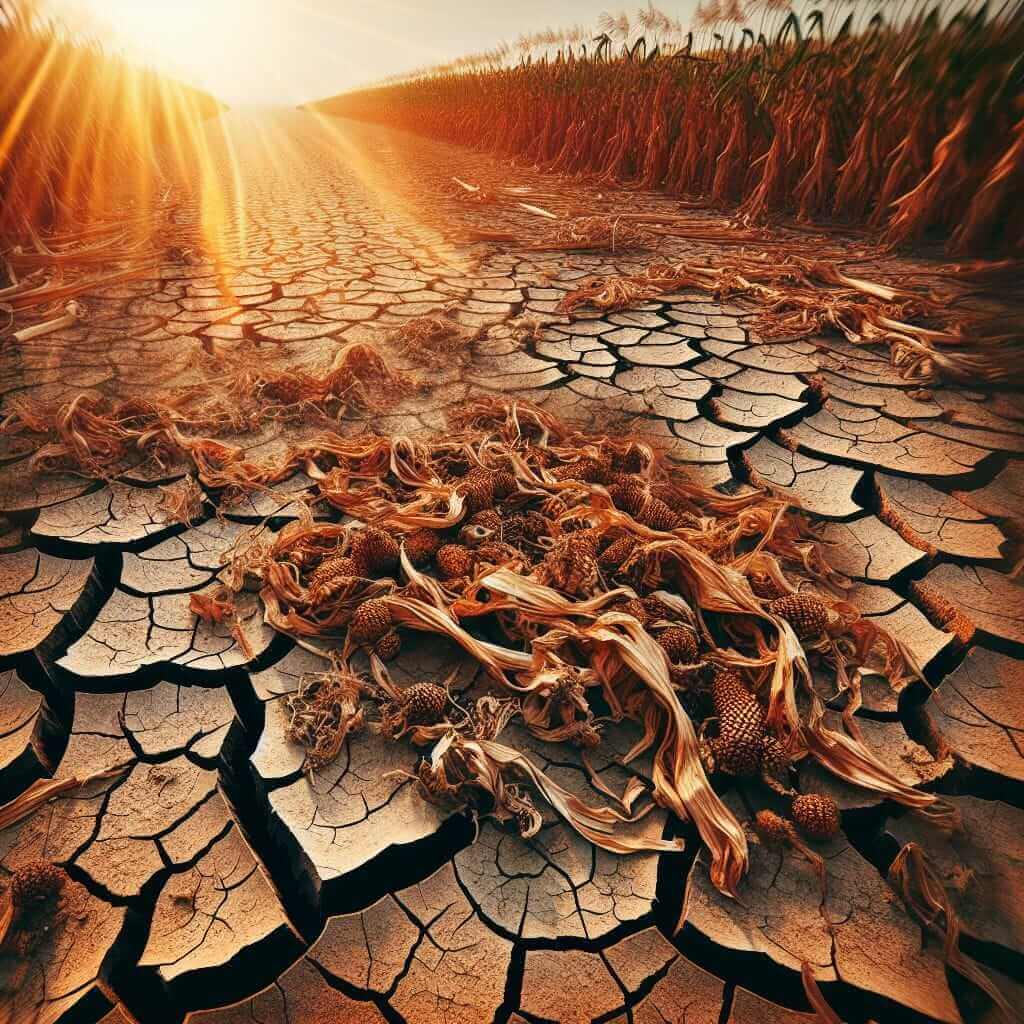The Reading section of the IELTS exam is designed to test a candidate’s ability to read and understand various types of texts, ranging from simple to complex. One recurring theme in IELTS Reading passages is the impact of climate change on various sectors, showing its significance and relevance. In this article, we’ll delve into the topic: “How does climate change impact global agriculture?” This not only provides you with a chance to practice, but it also follows a trend observed in recent years where subjects like climate change frequently appear. Given the pressing issue of global climate change, it’s likely to continue being a focal point in future exams.
Main Content
IELTS Reading Passage
Section 1: Easy Text
Climate Change and Global Agriculture
Climate change refers to long-term changes in temperature, precipitation, and weather patterns. These alterations have profound effects on global agriculture. Rising temperatures and unpredictable rainfall patterns lead to a range of consequences that threaten the stability of food production worldwide.
One primary impact is on crop yield. As temperatures increase, many crops struggle to survive in warmer conditions, leading to reduced yields. For example, wheat and maize, which are staple foods, show significant yield declines under extreme heat. Additionally, changes in precipitation patterns result in either severe droughts or floods, both of which are detrimental to farming.

Another consequence is the increased prevalence of pests and diseases. Warmer temperatures and changing weather conditions create environments where pests thrive. This leads to more frequent and severe outbreaks, affecting crop health and reducing harvests.
Livestock farming is also affected. Heat stress can harm animal health, reducing growth and milk production. This not only affects food supply but also the livelihoods of those dependent on livestock farming.
In conclusion, climate change poses a serious threat to global agriculture through its impacts on crop yield, pest prevalence, and livestock health. Adaptation strategies are crucial to mitigate these effects and ensure food security in the future.
Questions
Question Type: True/False/Not Given
- Climate change has only a minor impact on crop yield.
- Droughts and floods have no effect on farming.
- Livestock farming is unaffected by climate change.
Question Type: Matching Information
- Match the descriptions (a-c) with the corresponding effects mentioned in the passage:
- (a) Yield decline in staple crops
- (b) Increased pest outbreaks
- (c) Effects on livestock health
Answer Key
True/False/Not Given
- False – The passage states that climate change leads to reduced crop yields, indicating a significant impact.
- False – The passage clearly mentions that severe droughts and floods negatively affect farming.
- False – The passage describes how heat stress from climate change can harm livestock health and productivity.
Matching Information
-
- (a) Yield decline in staple crops – This matches with the explanation of reduced yields in wheat and maize.
- (b) Increased pest outbreaks – This relates to the increased frequency and severity of pest outbreaks due to warmer temperatures.
- (c) Effects on livestock health – This should be matched with the section discussing heat stress on animals.
Common Pitfalls
When tackling True/False/Not Given questions, make sure to distinguish between information that is directly stated (True or False) and information that is implied or not mentioned (Not Given). For Matching Information, make sure to focus on keywords and key phrases rather than superficial word matching.
Vocabulary
-
Yield (noun): The amount of crop produced in a given area.
- /jiːld/
- Example: “The yield of wheat has decreased due to extreme heat.”
-
Precipitation (noun): Any form of water – liquid or solid – falling from the sky, such as rain or snow.
- /prɪˌsɪpɪˈteɪʃən/
- Example: “Changes in precipitation patterns affect farming.”
Grammar
Comparative Structures: Used to show how one entity compares to another. For example:
-
“As temperatures increase, many crops struggle to survive in warmer conditions.”
- Construction: As + subject + verb, + clause
-
Example: “As the population grows, the demand for food increases.”
Advice for IELTS Reading
- Practice Regularly: Consistent practice will help you become familiar with the various types of questions and texts you might encounter.
- Improve Your Vocabulary: A broad vocabulary helps you understand passages more easily and answer questions more accurately.
- Read Widely: Read a variety of texts (articles, essays, studies) on different subjects to become comfortable with different writing styles and terminologies.
- Time Management: Develop strategies to manage your time effectively during the exam. Practice skimming and scanning techniques to locate information quickly.
With persistent effort and strategic preparation, achieving a high score in the IELTS Reading section is well within reach. Good luck on your journey to mastering IELTS Reading!